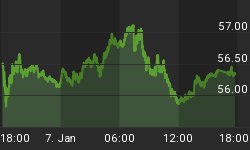Back in June we wrote an article entitled "US Stock Market Priced for Poor Returns" in which we argued that stock market valuations are predictive of long-term returns when measured in such a way as to smooth out earnings volatility. As evidence, we presented the following chart comparing quintiles of market valuation against average 10-year forward performance (please see the original article for an explanation of our methodology):

We also noted that the S&P 500 was squarely in the "most expensive" quintile and, as such, was priced to deliver poor long-term returns.
A lot has changed since June. The good news is that the crash that's played out over the past few months has resulted in a vast improvement in market valuations.
As measured by the P/E10, the broad U.S. stock market is now slightly undervalued. The current market valuation is the lowest its been in 20 years, and as the below graph indicates, valuations are below their post-WWII median levels.

The market was firmly in the middle of the most expensive quintile when we originally created the first chart. It is now firmly in the middle quintile. The market as a whole is priced at a level that has historically tended to lead to good -- though not outstanding -- returns.
There are a couple of caveats to this idea -- one bullish, one bearish.
Let's start with the bearish one. The second graph makes it clear that while values are below their typical post-WWII levels, there is certainly scope for them to go even lower. The historically mean-reverting nature of this series suggests that they very well might do so.
But that transition could take many years, if prior patterns repeat themselves. In the meantime, we believe that the government's extraordinarily aggressive credit crisis countermeasures will lead to elevated inflation in the years ahead. So even if valuations do head lower down the road, there is a chance that they could do so by means of increased nominal earnings (due to both inflation and economic growth) rather than further steep nominal stock price declines.
Of course, there is no guarantee of this. So while valuations are now favorable, the bearish caveat suggests being patient and keeping some money out of the stock market for potentially better bargains down the road.
The bullish caveat regards the fact that measuring the P/E10 of the overall market ignores differing valuations between sectors.
Overall earnings were unusually high in recent years -- this is what led to the high price to 10-year earnings ratio even as the traditional price to 1-year earnings ratio remained deceptively low. But a sizable chunk of these extra earnings resulted from the massive but effectively "fake" financial sector profits that were based on unsustainable housing and credit bubbles. Similarly, the debt-fueled consumption boom did not impact all areas of the market equally.
While the rampantly easy credit of the recent past temporarily benefitted all companies to a degree, the benefits were much greater for certain industries -- the financial and consumer discretionary sectors in particular -- than for the rest of the market. Averaging the valuations of all these sectors together misses that distinction, with the result that some sectors are valued a lot more favorably than the above graph indicates (as they have been for some time).
Summing it up, the market as a whole is priced for good long-term returns, but it could end up priced for great returns down the road. Meanwhile, certain sectors within the market are priced for great returns already.
- Read more investment articles at pcasd.com.
- Learn about how we can help investors benefit from the ideas presented in our articles.
- View our answers to frequently asked questions about what we do.
- Subscribe to our RSS feed.
















